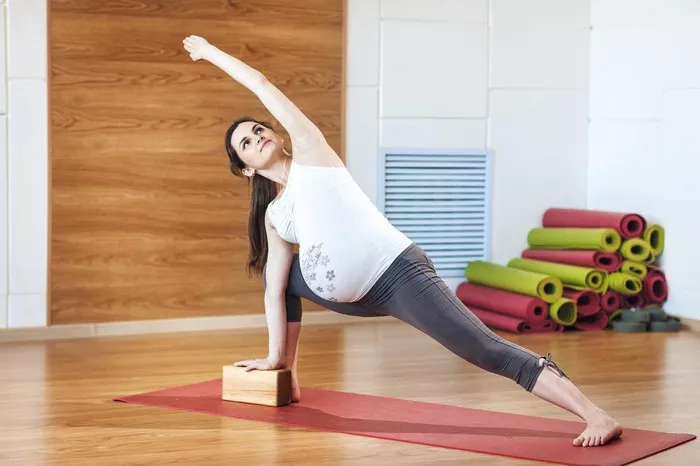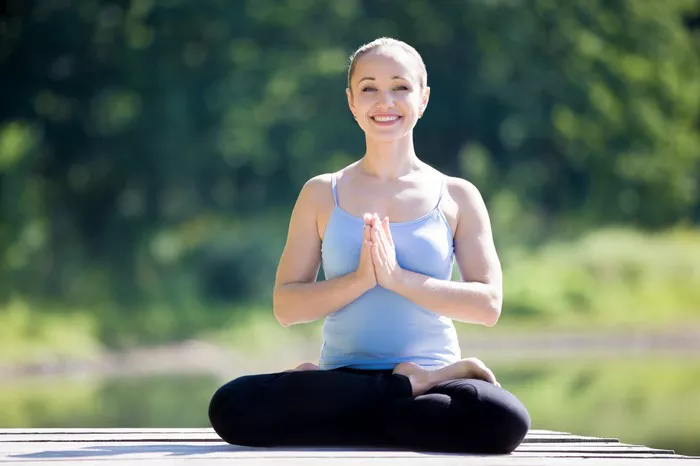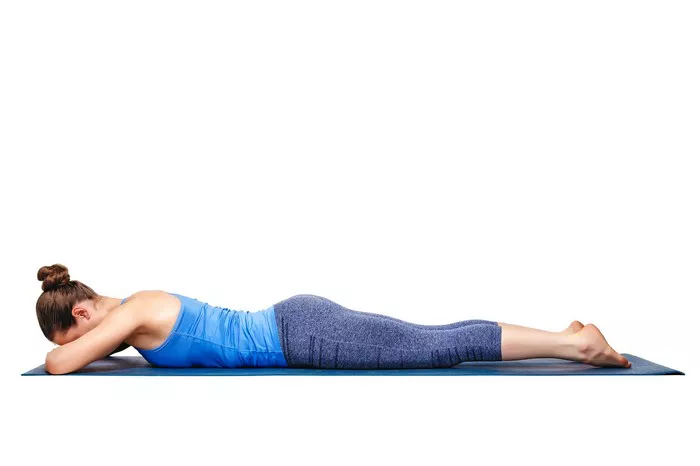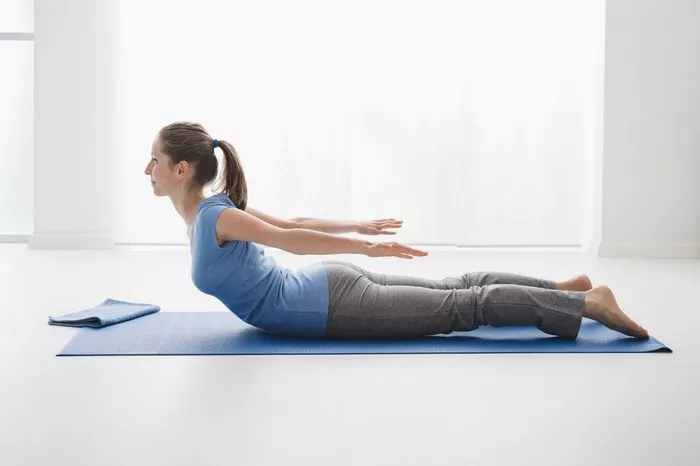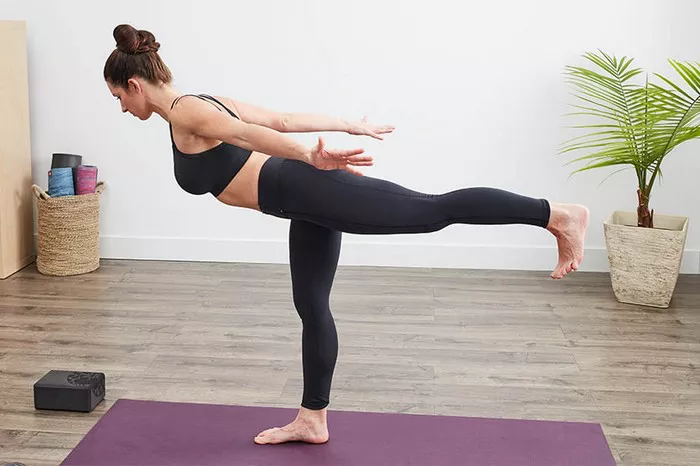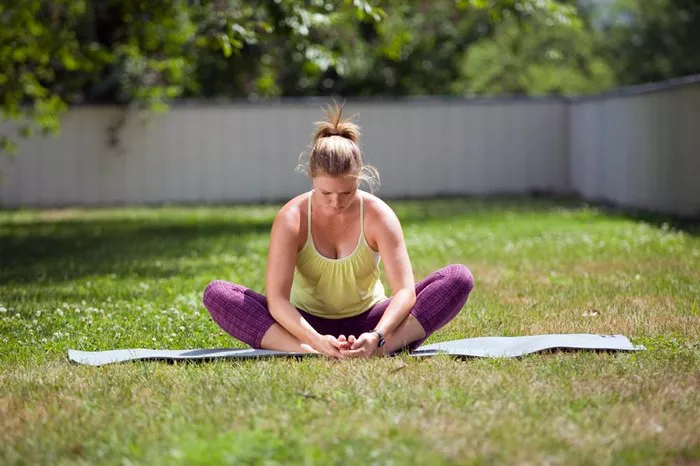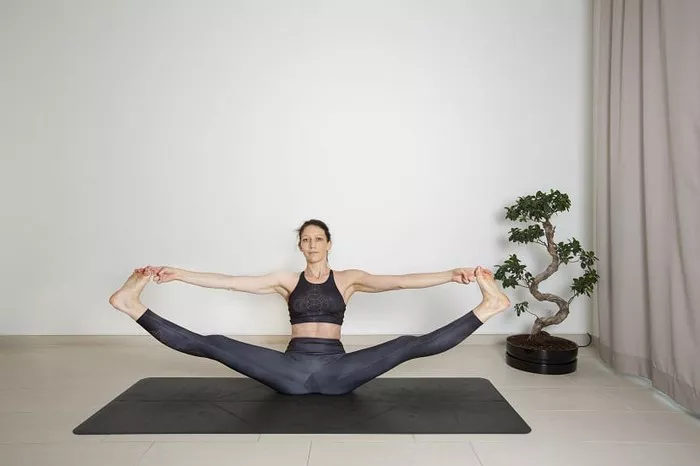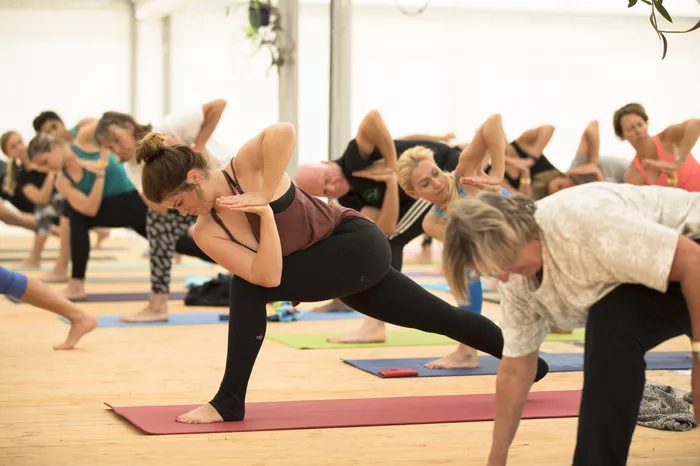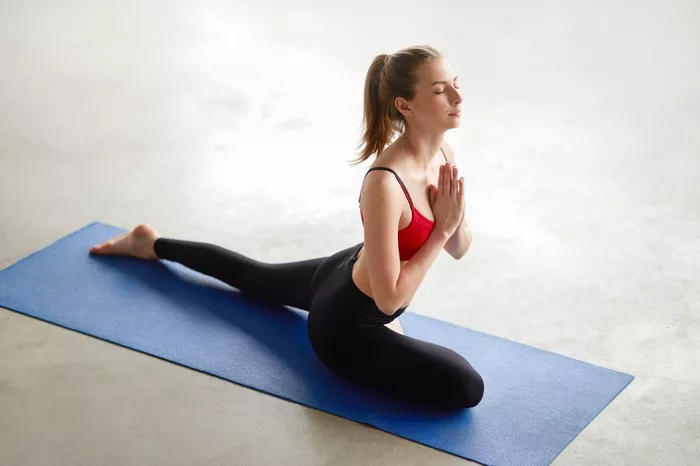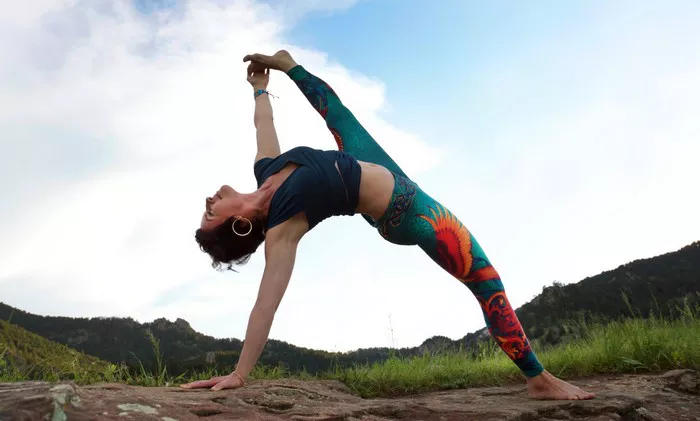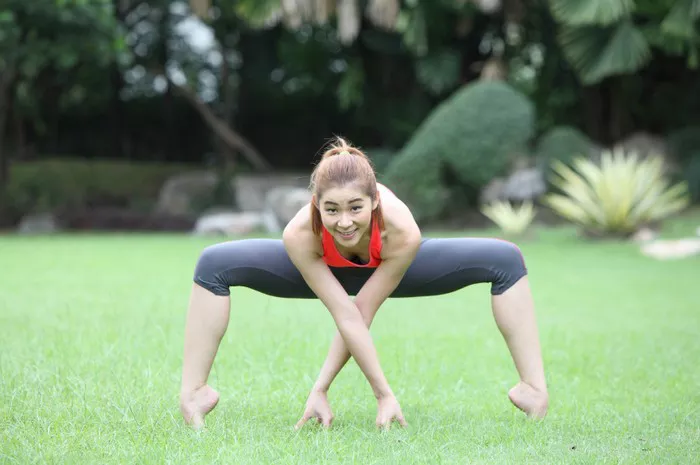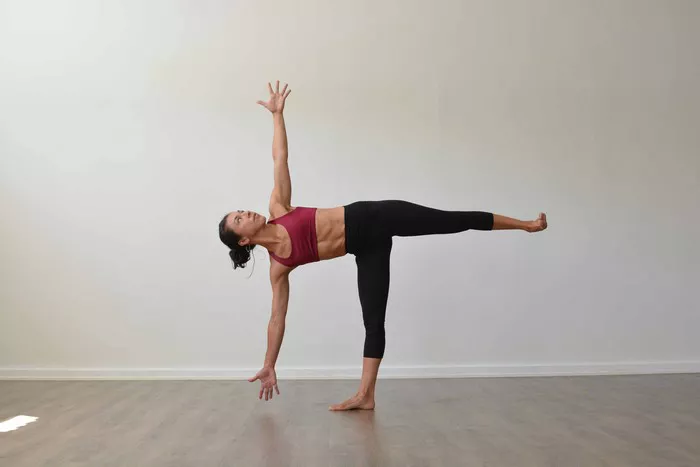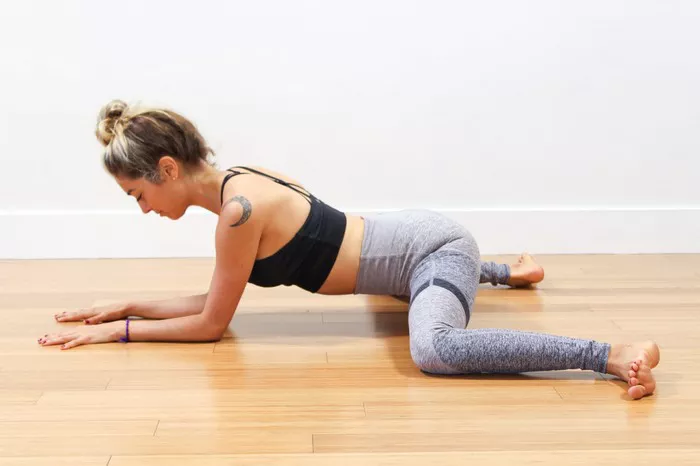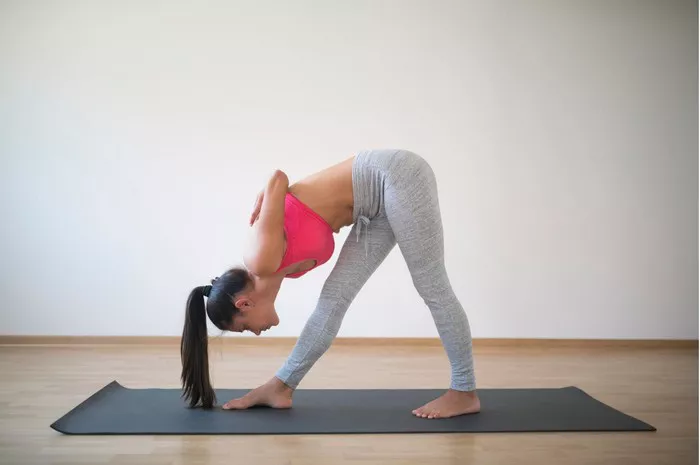Sciatica is a condition characterized by pain that radiates along the path of the sciatic nerve, which branches from the lower back through the hips and down each leg. This pain can be sharp, burning, or feel like an electric shock. It typically affects only one side of the body and can range from mild discomfort to severe and debilitating pain. Common causes include a herniated disk, spinal stenosis, or a bone spur on the spine compressing part of the nerve.
The impact of sciatica on daily life can be profound. Simple activities such as walking, sitting, or even standing for short periods may become challenging. Additionally, the pain can disrupt sleep and limit mobility, leading to reduced productivity and quality of life. Effective management of sciatica is essential to regain comfort and functionality, and that is where therapeutic disciplines like yoga come into play.
What Is Iyengar Yoga?
Iyengar Yoga is a form of Hatha yoga developed by B.K.S. Iyengar. It emphasizes precision, alignment, and the use of props such as blocks, straps, and bolsters to support the body in various poses. This method makes yoga more accessible to individuals with physical limitations or injuries. The practice focuses on holding poses for longer durations, allowing the body to gradually open and align properly.
One of the defining features of Iyengar Yoga is its therapeutic approach. Teachers are trained to observe students closely and modify poses according to individual needs. This makes it particularly suitable for people with specific conditions such as sciatica. Its methodical, slow-paced nature is less likely to aggravate nerve pain compared to more vigorous yoga styles.
How Iyengar Yoga Benefits Sciatica Sufferers
Gentle Stretching and Alignment
Iyengar Yoga provides gentle yet effective stretching, which helps relieve the compression on the sciatic nerve. Many of the poses are designed to create space in the spine, reduce inflammation, and improve posture. Proper alignment in the poses ensures that the body is supported in a way that prevents further irritation of the nerve.
Use of Props for Support
The strategic use of props allows individuals with sciatica to perform poses without straining their back or legs. Bolsters, blankets, and straps can be used to modify traditional yoga poses, ensuring that the practitioner maintains correct alignment and experiences the benefits without pain. This makes it an excellent option for beginners or those experiencing severe symptoms.
Focus on Back and Hip Muscles
Many Iyengar Yoga poses target the muscles of the back, hips, and hamstrings—areas commonly associated with sciatic pain. Strengthening and stretching these muscles can reduce pressure on the sciatic nerve. Poses such as Supta Padangusthasana (Reclining Hand-to-Big-Toe Pose) and Ardha Chandrasana (Half Moon Pose) can be particularly beneficial.
Mind-Body Awareness
Iyengar Yoga emphasizes mindfulness and body awareness, which can be instrumental in managing chronic pain. By tuning into subtle bodily sensations, practitioners learn to move safely and avoid positions that might exacerbate their condition. This heightened awareness contributes to better self-care and long-term pain management.
Key Iyengar Yoga Poses for Sciatica Relief
Here are some poses commonly recommended for those suffering from sciatica:
- Supta Padangusthasana (Reclining Hand-to-Big-Toe Pose): Stretches the hamstrings and calves while relieving tension in the lower back.
- Setu Bandha Sarvangasana (Bridge Pose with support): Strengthens the lower back and glutes, providing gentle spinal traction.
- Adho Mukha Svanasana (Downward-Facing Dog): Elongates the spine and opens up the back body, which can reduce nerve compression.
- Ardha Chandrasana (Half Moon Pose): Helps to stretch and strengthen the muscles of the hips and legs.
- Viparita Karani (Legs-Up-The-Wall Pose): A restorative pose that encourages blood flow and relieves tension in the lower spine.
Always practice these poses under the supervision of a certified Iyengar Yoga instructor, especially if you are new to yoga or dealing with significant pain.
What Experts Say About Iyengar Yoga and Sciatica
Medical professionals and certified yoga therapists often recommend Iyengar Yoga as part of a comprehensive approach to managing sciatica. According to the International Association of Yoga Therapists, therapeutic yoga modalities like Iyengar can significantly improve function and reduce pain in individuals with chronic back issues, including sciatica.
Dr. Loren Fishman, a renowned expert in yoga therapy, has conducted studies showing the effectiveness of specific yoga poses in treating sciatica and other spinal conditions. His research supports the notion that targeted yoga interventions can be just as effective as conventional treatments, with fewer side effects. Iyengar Yoga, with its precision and adaptability, is often highlighted as a safe and effective choice.
Safety Precautions and Considerations
Although Iyengar Yoga is generally safe, especially with the use of props, it is essential to approach it with caution if you have sciatica. Here are some key considerations:
- Consult Your Doctor: Before starting any new exercise regimen, get approval from your healthcare provider.
- Seek Qualified Instruction: Work with a certified Iyengar Yoga instructor familiar with therapeutic applications.
- Avoid Aggravating Poses: Not all yoga poses are suitable for sciatica. Forward bends and twists can worsen symptoms if not done correctly.
- Use Props Generously: Don’t hesitate to use supports to make poses more accessible and comfortable.
- Listen to Your Body: If a pose causes pain, stop immediately and consult your instructor.
By adhering to these precautions, you can make the most of Iyengar Yoga’s benefits while minimizing risk.
Integrating Iyengar Yoga into a Holistic Sciatica Management Plan
For optimal results, Iyengar Yoga should be integrated into a broader treatment plan that may include physical therapy, medication, and lifestyle adjustments. Yoga complements other therapies by enhancing flexibility, reducing stress, and improving overall body mechanics. Many practitioners find that regular Iyengar Yoga sessions lead to gradual, sustainable improvements in pain and mobility.
A holistic approach might look like this:
- Weekly Iyengar Yoga classes
- Daily home practice of selected poses
- Physical therapy exercises
- Anti-inflammatory diet
- Ergonomic adjustments at work and home
- Stress-reduction techniques such as meditation or breathing exercises
Combining these elements can create a synergistic effect, accelerating recovery and improving quality of life.
Real-Life Experiences and Testimonials
Many people with sciatica have turned to Iyengar Yoga after other treatments failed to provide relief. Testimonials often highlight increased flexibility, reduced pain, and a better understanding of body mechanics as key benefits. Some individuals report that they were able to reduce or eliminate their use of pain medication after consistent practice.
For instance, a 45-year-old office worker with chronic sciatica shared that after six months of Iyengar Yoga, they could sit comfortably at their desk and even resume hiking—activities that were previously impossible. These anecdotal reports align with clinical observations and underscore the potential of Iyengar Yoga as a transformative tool in sciatica management.
Conclusion
Iyengar Yoga offers a structured, accessible, and highly effective approach to managing sciatica. Its emphasis on alignment, use of supportive props, and therapeutic orientation make it an ideal choice for those suffering from nerve pain. When practiced under professional guidance and integrated into a holistic treatment plan, it can significantly enhance mobility, reduce discomfort, and improve overall well-being.
If you are considering Iyengar Yoga for sciatica, consult your healthcare provider and seek out a certified instructor. With dedication and the right support, relief from sciatica may be within your reach.
FAQs
Q1: Can Iyengar Yoga completely cure sciatica?
Iyengar Yoga can significantly reduce symptoms and improve quality of life, but it may not “cure” the underlying cause of sciatica. It is best used as part of a broader treatment strategy.
Q2: How often should I practice Iyengar Yoga for sciatica relief?
Starting with 2-3 sessions per week under professional guidance is ideal. Consistency is key to experiencing long-term benefits.
Q3: Are there any poses I should avoid if I have sciatica?
Yes, forward bends, deep twists, and unsupported backbends may aggravate sciatica symptoms if not done properly. Always consult an experienced teacher.
Q4: Do I need yoga experience to start Iyengar Yoga for sciatica?
No prior experience is needed. Iyengar Yoga is accessible to beginners, especially with the use of props and expert instruction.
Q5: Can I practice Iyengar Yoga at home?
Yes, but it’s recommended to learn the basics from a certified instructor first to avoid mistakes and ensure proper technique.

